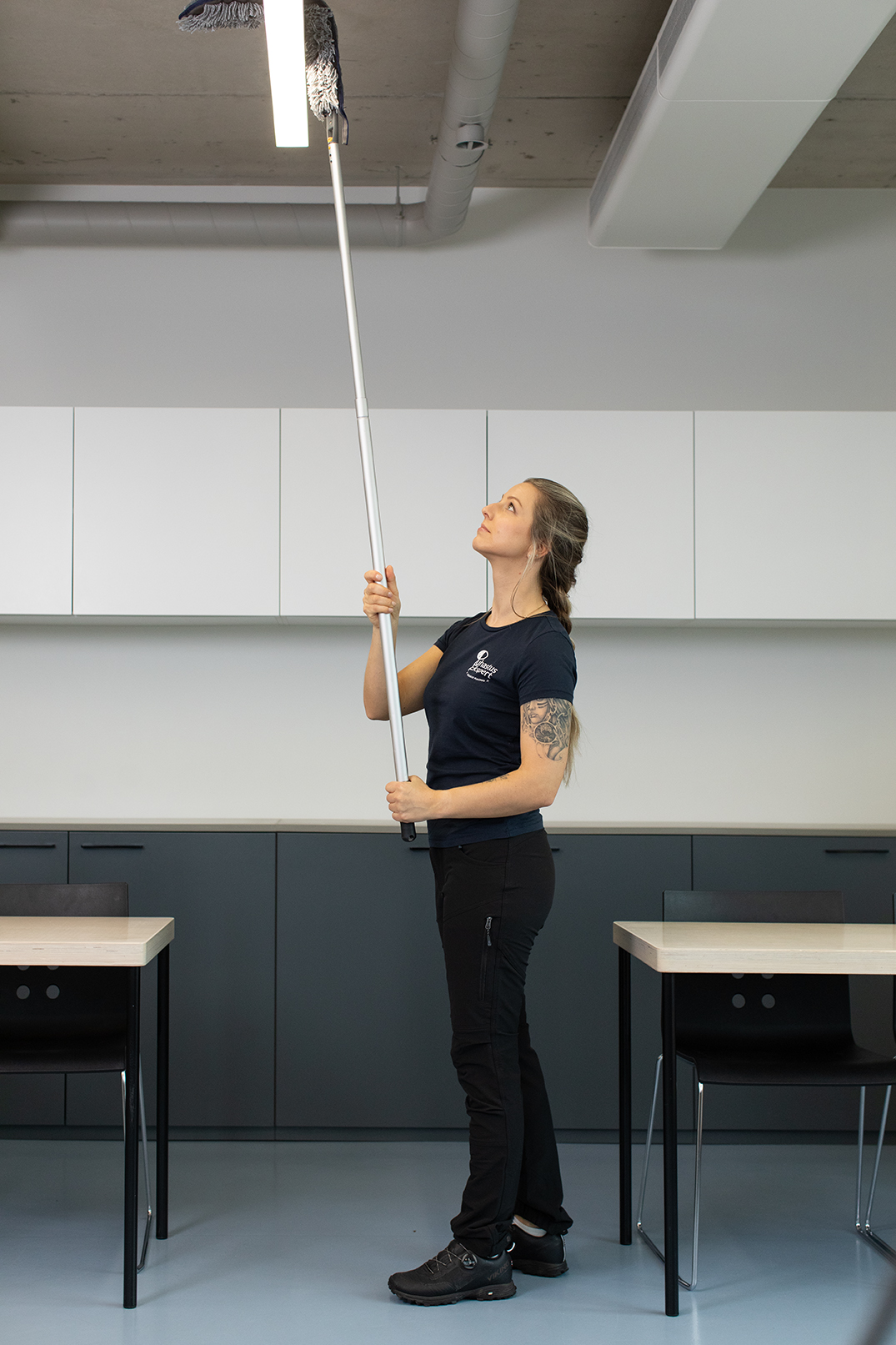info@puhastusekspert.ee +372 5611 1048
How Did the Cleaning Ergonomics Project Come about?
 Cleaning can be health-promoting, but it can also be detrimental to health. Everything depends on HOW cleaning is performed, which in turn relies on knowledge and skills.
Cleaning can be health-promoting, but it can also be detrimental to health. Everything depends on HOW cleaning is performed, which in turn relies on knowledge and skills.
2020. We published the Cleaning Handbook. We sought the latest perspectives on cleaning ergonomics, working through various materials and data. We realized that this is a serious problem affecting the lives and health of many people. Health impacts are often felt years later and are difficult to link to specific cleaning activities. For example, in Finland, cleaners were absent from work due to illness for an average of 19 days in 2023, compared to an average of 11 days for all professions. This is 73% more than the average. Musculoskeletal disorders are a common cause of sick days. Additionally, cleaners more frequently take disability pensions due to mental health issues. Over 4 million people work as cleaners in the European Union. If the situation in other countries is similar to Finland, then an estimated 76 million sick days are taken by cleaners annually in the EU. According to ESG principles, the S (social) factor is related to people’s well-being, and ergonomics is crucial in this regard.
In 2021, we conceived the idea of bringing together cleaning service experts from various countries and, with the support of Erasmus+ funding, initiating research into this topic and developing publicly accessible materials.
During the Project:
- We conducted an international survey, which was answered by 267 cleaners and 147 cleaning service managers.
- In Finland, we conducted Smartwear tests to determine more precisely which body parts cleaning activities affect and how.
- We analyzed globally available cleaning ergonomics materials.
- We tested the developed training materials in training cleaners.
Key Findings:
- 93% of cleaners who responded to the survey experienced pain in some part of their body during work.
- In the context of ergonomics, in addition to physical strain, we must also consider mental impact. 72% of managers and 46% of cleaners experienced mental strain at work, while 43% of managers and 69% of cleaners experienced physical strain.
- The extent of the strain is individual and depends, among other factors, on age and general physical fitness.
- According to Smartwear tests, the strain of damp and wet mopping can be more than twice as high as the strain of cleaning with a floor scrubber.
The Project Resulted in:
- 20 educational videos and an image guide for preventing occupational accidents and diseases in the cleaning sector.
- training materials for teaching cleaning ergonomics.
Author: Helge Alt, Tarja Valkosalo
The article was published in European Cleaning Journal on January 13, 2025
